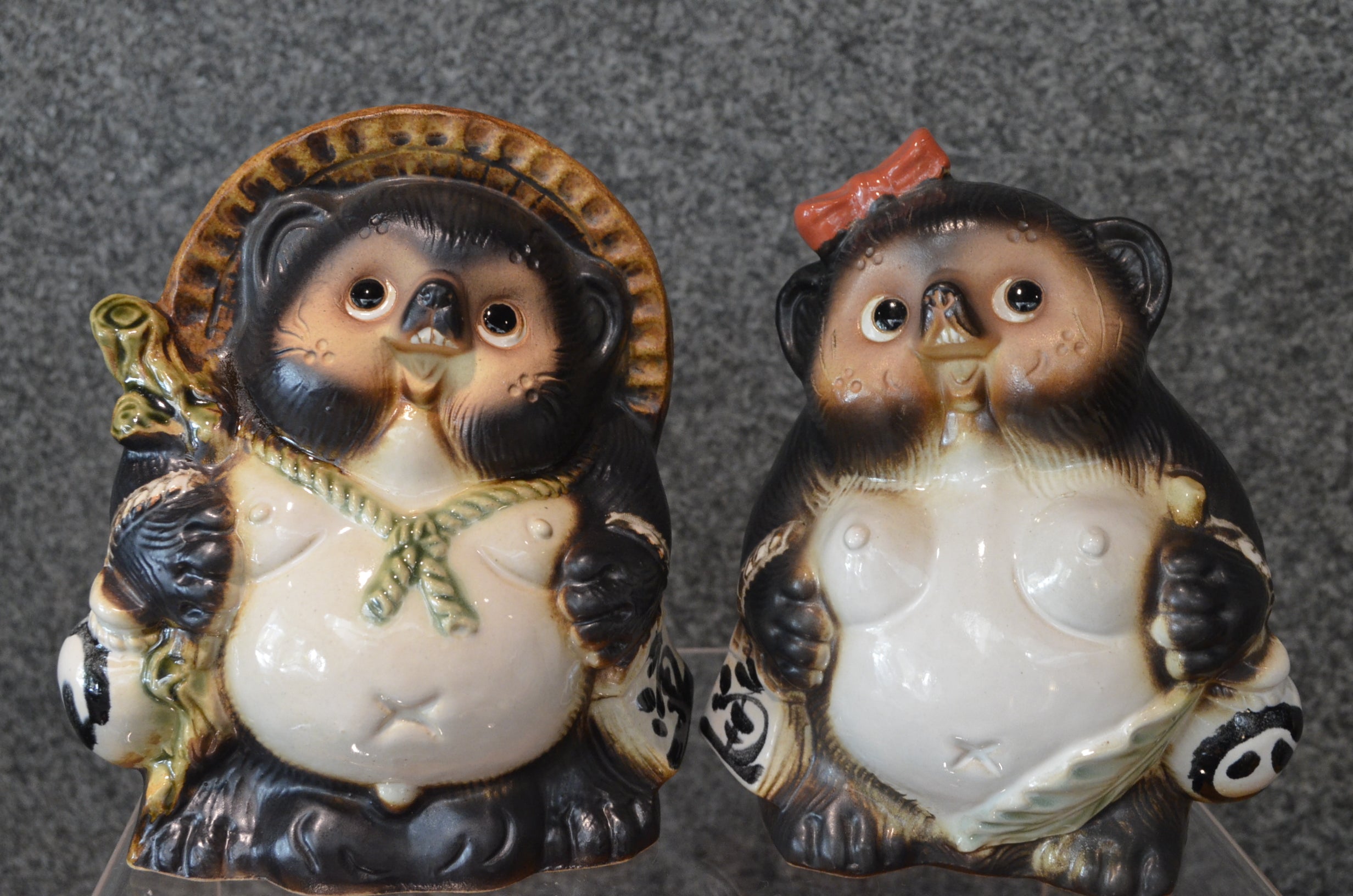Why is a Raccoon-dog Figurine a Lucky Charm in Japan?

Have you ever seen a raccoon-dog figurine in front of a store or house in Japan? At Kyoto Handicraft Center, the raccoon-dog figurine is welcoming guests warmly. Our staff call him ‘Tanu-Kichi’ as nickname. ‘Tanu’ is named after ‘Tanuki’ which means a 'raccoon-dog' in Japanese. ‘Kichi’ means ‘fortune’ which is used for male’s name in Japan.
A homophone of ‘Tanuki’ means ‘to excel others’. ‘Ta’ means ‘others’ and ‘Nuki’ means ‘to excel’. Therefore, the raccoon-dog figurine is placed at the storefront as a symbol of business success.
Where does Shigaraki ware come from?

Learn more about Male/Female Racoon-dog figurines here: Male・Female
Tanu-Kichi is not for sale but small raccoon-dog figurines will be available as a new product this month soon. These male and female raccoon-dog figurines are Shigaraki ware. Have you ever heard about Shigaraki ware? Shigaraki ware is a ceramic ware produced mainly in Shigaraki-cho, Koka City, Shiga Prefecture, northeast of Kyoto. Shiga is a place of rich nature with Lake Biwa, a large freshwater lake. Shigaraki ware is one of the six oldest kilns in Japan. It is characterized by its sticky, high-quality clay and can be made in a variety of sizes, large and small. The texture is rough to the touch due to the large amount of feldspar in the mixture.

What are Eight Meanings of a Raccoon-dog Figurine?

There are various theories but mainly a raccoon-dog figurine has eight auspicious meanings below.
1.Straw hat on the head...Protection from unexpected disaster
2.Big eyes...Look at things correctly to make a right decision
3.Big belly...Calm and boldness
4.Sake bottle in hand...No worries about food
5.Smile...Amiable smile leads to prosperous business
6.Big tail...Stability
7.Passbook...Trust comes first.
8.Ball of gold...Improve money luck
Written on the sake bottle is Kanji for 8, which is a very auspicious number in Japan due to its shape, meaning "to spread out wide toward the end”. Also, the sake bottle is called “Tokkuri” in Japanese. “Toku” means “virtue”. It is also said to be a meaning of acquiring personal virtue.
Shigaraki ware with a history of over 1200 years

Learn more about this bowl here.
The origin of Shigaraki ware dates back to the 8th Century. In 742, the construction of Shigaraki no Miya Palace was begun under the orders of Emperor Shomu. The roof tiles used in the palace of this capital are said to be the origin of Shigaraki ware. However, as a result of earthquakes and fires over the years, the construction was abandoned. After that, Shigaraki ware was handed down from generation to generation, with farmers making pots and other daily utensils.
In the 14-16th century, with the development of the tea ceremony, Shigaraki ware as a tea ceremony pottery began to attract attention. This was because of its proximity to Kyoto and Nara, which were the centers of the tea ceremony, and many tea masters liked its natural texture without glaze.
In the 17th century, with the advent of climbing kilns, mass production became possible, and the production of large ceramics such as water jars became popular.
Since then, Shigaraki ware has become one of Japan's representative potteries, changing with the times as glazes are applied and patterns are drawn. In 1975, it was designated as a traditional craft.
Shigaraki ware to decorate your dining table

Learn more about these plates: "Shinkai henkei zara"(back), "Shinkai hishigata bachi" (front)
Autumn is the season when we can harvest many delicious foods as we have the word "Autumn for Big Appetite" in Japan. It can brighten up your dining table if you have tableware that enhances your meals. In particular, many Shigaraki ware vessels have a rustic color that blends in with the dining table.
At Kyoto Handicraft Center Online Store, Shigaraki ware rice bowls, bowls, mugs, etc. are available for sale. Each piece of Shigaraki ware is handmade one by one, and all of them have a slightly different shape and color, making them very fascinating.

Shigaraki Ware Rice Bowl "Souten"
"Souten" has a beautiful blue and black color scheme. Just the right size to fit in hand.

Shigaraki Ware Bowl "Seiun mori bachi"
"Seiun" means "nebula" in Japanese. The star-like pattern that shines in the black with blue is attractive. It is perfect for serving salads and pasta etc.

"Kohaku" means "Amber" in Japanese. This mug has a calm, amber-like color. It is a large size suitable for soup.
Let's find your favorite Shigaraki ware!
In this blog, we have introduced the history and characteristics of Shigaraki ware. Shigaraki ware can be used for a variety of purposes, from bowls and mugs for the dining table to raccoon figurines. Please try to find the Shigaraki ware that best suits your lifestyle.


